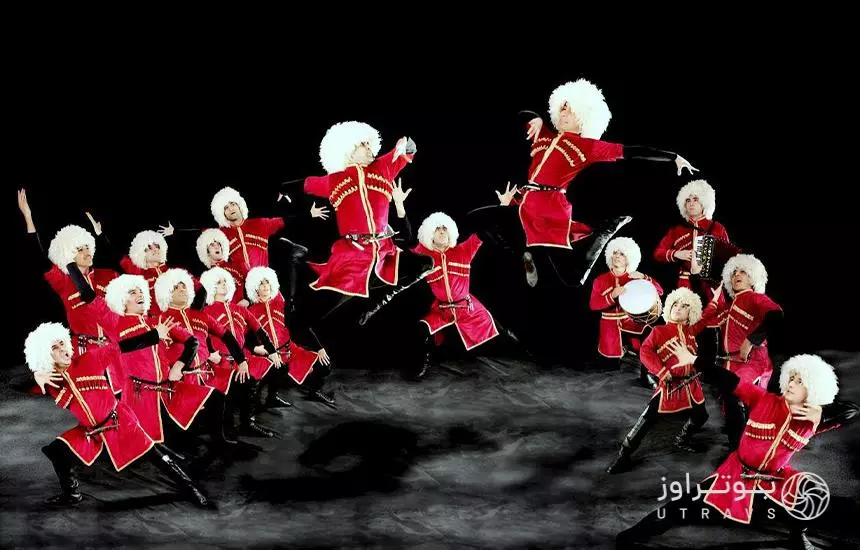ترجمه نوشته:
An in-depth look at Azeri culture; a unique attraction for health tourists in Iran
Iran is a land of unparalleled ethnic and cultural diversity. Amidst this diversity, Azeri culture holds a special place. Azeri Turks, who live in provinces such as East Azerbaijan, West Azerbaijan, Ardabil, Zanjan, and parts of Hamedan, Qazvin, and Tehran, have a rich and deep-rooted history and a distinct and brilliant culture that encompasses everything from literature to music, clothing, food, and social rituals.
Historical background of Azeri culture
Azeri culture has its roots in past centuries. Influenced by great empires such as the Safavids, Ilkhanids, and Seljuks, the Azeri have been able to blend their culture with Iranian history. The Azeri Turkic language, the mother tongue of this people, is written in the Persian alphabet and has a rich literature of poems, legends, and folk proverbs. Poets such as Nizami Ganjavi and Shahriar are considered prominent figures in Azeri culture.
Language and literature
Azeri Turkish is the second most spoken language in Iran after Persian. It has been transmitted orally and in writing over the years, and is a major source of love poems, social satire, and folklore. Some Azeri terms and vocabulary have permeated the Persian language to the point where they are part of the everyday vocabulary of many Iranians today.
Traditional Azeri music
One of the most prominent parts of Azeri culture is ashiq music. Ashiqs narrate epic, romantic, and social poems using a special instrument called a qupuz. This type of music is a combination of poetry, singing, and songwriting that has arisen from the hearts of the people and has been passed down from generation to generation. Ashiq music was registered on the UNESCO Intangible Cultural Heritage List in 2009.
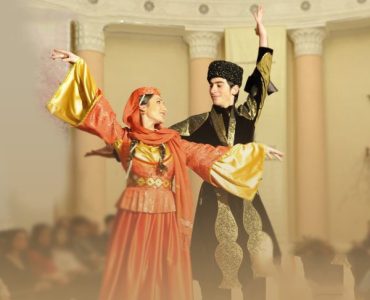
Traditional clothing and attire
Traditional Azeri clothing is very colorful, cheerful, and has a unique design. Azeri women usually wear patterned headscarves, long shirts, and loose trousers, while men wear traditional vests and shawls. These clothes are not only a sign of cultural authenticity, but also a reflection of the geographical location and climatic conditions of the region.
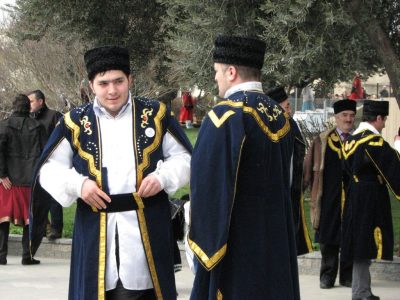
Social customs
Azeri culture is rich in traditional rituals and ceremonies. One of the most prominent of these ceremonies is the wedding ceremony, which is accompanied by music, dance, and special foods. Also, the Nowruz ceremony among the Azeri is celebrated with special traditions such as “Takham-Gardani” and “Chaharshanbe-Suri”. Azeri people are known for their hospitality, and their colorful tables reflect the generosity and sincerity of this people.
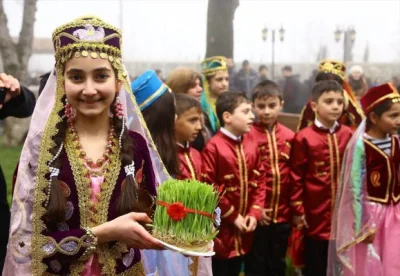
Local Azeri cuisine
Azeri cuisine is one of the richest Iranian culinary styles. Dishes such as Tabrizi meatballs, Azeri-style Qorme Sabzi, yogurt soup, hair-leaf dolma, basterma-plo, and various soups are among the authentic dishes of this region. The use of fresh meat, local vegetables, and special spices gives Azeri cuisine a distinctive flavor.
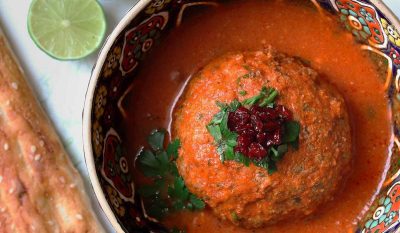
Crafts
Azeri culture is also very rich in handicrafts. Tabriz carpets and rugs are world famous. Kilim weaving, varnish weaving, leather embroidery and traditional jewelry making are also other handicrafts of the Azeri people. These crafts are not only practical but also very valuable as cultural and artistic souvenirs.
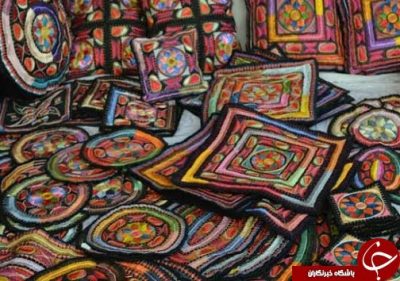
Cultural tourism attractions in Azeri-populated areas
Regions such as Tabriz, Ardabil, and Zanjan have many cultural attractions. The Blue Mosque of Tabriz, the historical bazaar of Tabriz, the tomb of Sheikh Safi al-Din Ardebili, the Soltaniyeh Dome in Zanjan, and dozens of other historical sites are great destinations for cultural tourists.
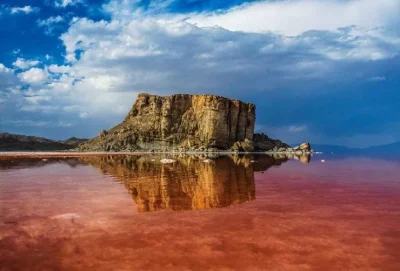
The role of Azeri culture in attracting health tourists
One of the most important reasons for health tourists to travel, in addition to quality medical services, is a unique cultural experience. Arvan Health Tourism Group, focusing on Azerbaijani-populated areas, provides a special experience for international patients. Tourists seeking medical treatment while experiencing local culture can enjoy the culture, art, and hospitality of the Azerbaijanis by visiting Azerbaijan, in addition to benefiting from advanced medical services.
Arvan Health Tourism Group is trying to provide a more in-depth introduction to this culture, allowing tourists to travel to Iran with greater awareness and experience a pleasant and cultural stay.
Application of Azeri culture in Iran’s health tourism industry
In recent years, the health tourism industry or “medical tourism” has become one of the growing sectors in the economies of developing countries. Meanwhile, Iran, with its competitive advantages such as high-quality and affordable medical services, expert medical staff, four-season nature, as well as rich and hospitable culture, has been able to find a special place among the popular health tourism destinations. One of Iran’s strengths in this area is the unique cultural capacity of the Azerbaijani regions, which can play a key role in attracting health tourists.
Why is Azeri culture considered a competitive advantage in health tourism?
Azeri culture, due to its unique characteristics, is able to provide a pleasant and humane experience for patients seeking treatment in Iran. Values such as hospitality, respect for the patient, maintaining privacy, and full support for the therapeutic and emotional needs of patients are rooted in Azeri culture. These characteristics make the patient feel that he or she has traveled to Iran not only for treatment, but also for a cultural and humane experience.
The role of the Azeri Turkish language in facilitating communication with health tourists
Azeri Turks live in Iran’s neighboring countries, including Azerbaijan, Turkey, Turkmenistan, and parts of Georgia and Russia. For many foreign patients who speak Azeri Turkish or Istanbul Turkish, being in a region with a common language is a great advantage. In this regard, Arvan Health Tourism Group, by utilizing native staff fluent in Azeri Turkish, provides high-quality intercultural services that create a sense of security and peace of mind for tourists.
Experiencing healing with culture: Therapy that goes beyond medicine
The health tourist is not just looking for an operating room or medical services; he or she is looking for a holistic experience. In this regard, Azeri culture can form a large part of his or her experience. Traditional ceremonies, local cuisine, live Ashiq music, local clothing, visits to historical sites and traditional markets can all create unforgettable moments for the patient and his or her companions.
Arvan Health Tourism Group has designed cultural-therapeutic packages to provide health travelers with the opportunity to experience medical and cultural services simultaneously. For example, after surgery or initial treatments, the patient can relax in the tranquility of the lush green area of Kalibar or by the warm waters of Meshginshahr and enjoy the traditional atmosphere, music, and local cuisine.
Natural and therapeutic attractions of Azerbaijani provinces; an advantage for medical tourism
Azerbaijani provinces such as Ardabil, East Azerbaijan, and West Azerbaijan have many healing natural resources. Hot mineral springs, clean mountain air, rich sources of medicinal plants, and even traditional spa facilities are among the resources that can be used alongside modern medical services.
The hot springs of Sarein, near the city of Ardabil, are among the most famous examples, known not only in Iran but also throughout the Caucasus region. These springs, which have healing properties for joint, nerve and skin diseases, host thousands of health tourists from neighboring countries every year. Arvan Health Tourism Group provides complete health and recreational services by coordinating between medical and accommodation centers around these areas.
Food, music and climate; mental peace during treatment
Psychological studies have shown that cultural and environmental factors have a direct impact on the speed of recovery of patients. Native Azeri cuisine, rich in fresh vegetables, healthy protein, and natural spices, is not only delicious but also very suitable for the recovery period. Dishes such as doogh soup, dolma, kofte, and basterma-plo can replace industrial hospital food and give the patient a homely feeling.
Traditional Ashiqi music is relaxing and inspiring. In some treatment centers and resorts partnered with the Arvan Health Tourism Group, traditional live music programs are planned for health tourists, which creates a sense of belonging, empathy, and peace of mind during the treatment process.
Azeri culture and its positive impact on patient companions
In many cases, patients come with their family members on a medical trip. Azeri culture, with its hospitality, friendly social customs, and family atmosphere, also provides an excellent base for patients’ companions. Arvan Health Tourism Group has provided the opportunity for families to stay in traditional hotels and residences with cultural facilities and enjoy the trip with the patient.
Education, counseling, and cultural familiarization before the arrival of health tourists
Another key activity of the Arvan Health Tourism Group is to provide basic cultural education to tourists before they enter the country. This includes familiarization with the language, etiquette, food, social behavior, and even some common terms in Azeri culture. This helps the patient and their companions feel safe and socially accepted from the moment they arrive.
Azeri culture, soft power in developing Iran’s health tourism brand
In today’s competitive world, cultural branding plays a very important role in the development of health tourism. Countries such as India, Turkey and Thailand also use their culture to make medical services more attractive. Meanwhile, Iran, relying on Azeri culture, which is a combination of history, language, art, food and hospitality, can create a distinctive position in the international medical tourism market. Arvan Health Tourism Group, as a pioneer in this direction, has taken a big step in this direction by producing cultural content, multilingual advertising activities and using Azeri cultural capacities.
Final conclusion
Azeri culture is not only one of the most beautiful manifestations of Iranian civilization, but also known as an effective tool in the development of health tourism. From language and music to food and rituals, everything in this culture is designed to create a deep, humane and effective experience in the treatment process. Given these capacities, Arvan Health Tourism Group has been able to create a bridge between treatment and culture and invite patients from different parts of the world to the heart of Azeri culture in Iran.
